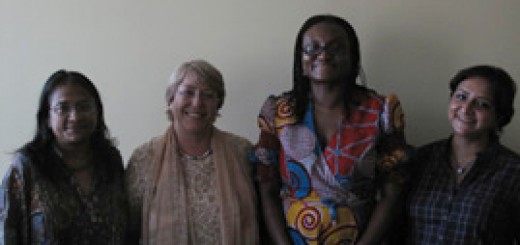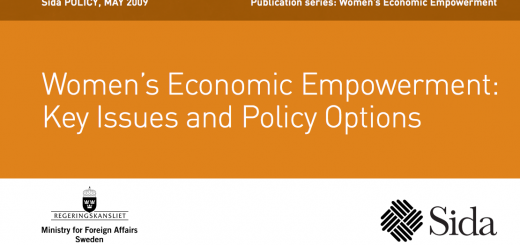The cost of good intentions: solidarity with workers in Bangladesh
Anita Roddick writes on openDemocracy with passionate anger about the conditions of women workers in the export garment sector based on testimonies of workers she met on her visit to Bangladesh. Her account is supported by the United States-based National Labor Committee (NLC) which has been active in the country on this issue.
Farida Khan, citing the World Bank country director in Bangladesh, offers a different perspective on the garment industry’s importance in the national economy and to Bangladeshi workers, one that partly counters Anita Roddick’s and the NLC’s views.
I have been engaged in research on different aspects of gender equality in Bangladesh, including the economic, for many years now; I have been particularly interested in how women themselves view their choices and life options. In contributing to this discussion, I will emphasise the issues that seem to me to be especially important in assessing the experience of women garment workers in Bangladesh, and where the best possibilities for improvement in their conditions might lie.
Bangladesh in transformation
Bangladesh, like much of south Asia, has always been a strongly patriarchal country. There are strict restrictions on women’s ability to participate in the public domain – whether to earn an income, attend school, or take part in politics. It remains one of the world’s poorer countries, classified by the United Nations as among its forty-eight least-developed economies.
However, Bangladesh is also undergoing major social transformation. Poverty has been declining slowly but consistently over the past decade. The country moved, after several years of military dictatorship, to a fragile democracy in 1990. There have also been important positive changes in the area of gender equality, something which would not have been possible if Islamic fundamentalists had the kind of presence that Farida Khan suggests.
In this period, successive governments have played an active role in improving girls’ educational prospects. The gender gap in education has been eliminated at primary level and reduced at secondary level. A very active NGO sector, working largely with women from poorer households, has promoted self-employment opportunities for women in the countryside through the provision of microcredit, as well as greater awareness of their rights.
There has been a high voter turnout by women at recent national and local elections – between 75% and 85% – and increasing numbers of women are standing as candidates in local elections.
Poverty remains a major problem in Bangladesh and many people still go hungry. No amount of effort by NGOs can solve the problem of unemployment in a country where, despite declining rates of population growth, there are a million new entrants to the labour force each year.
Women from poorer households who need paid work in order to survive face particular problems. Returns to women’s enterprise are low and social barriers to women’s participation in paid work outside the home remain strong, particularly in rural areas. Those women who do find wage work earn wages far below those of men.
It is in this context that the million or so jobs generated for women by the export-oriented garment industry have to be assessed. As Farida Khan points out, the participation of women in factory work is a relatively new phenomenon in a country where women were almost invisible in public space. In the Bangladeshi context, this is not a “novelty”: it is a social revolution. Nor is it necessary to have any illusions about employers’ motivations in “preferring” female labour in a globally competitive industry to appreciate what these jobs have meant to women workers in Bangladesh.
Thus, Farida Khan’s contribution, though it portrays a picture of Bangladesh which underestimates the possibilities for change, at least balances a recognition of the exploitative aspects of work in the garment industry with attention to its more positive implications. By contrast, Anita Roddick’s article does not.
Between slavery and freedom
The anger that impels Anita Roddick makes it clear that she draws from Bangladeshis’ experience the view that garment workers there are treated little better than “slaves”. She relates stories of workers being kicked and beaten, locked up by police at employers’ instigation, and roped together by their legs like cattle. Whether these are routine or exceptional incidents in the industry – and my own view is that they are not typical – they are indeed shocking and should be acted upon. The courts in Bangladesh work slowly and imperfectly, but they can and should be made to work in the interests of justice.
But in making this point, we should also remember that these women are not “slaves” – however terrible their situation may appear to Anita Roddick. They are a group of workers who are exploited by their employers because of their social vulnerability and their limited choices, but they have exercised considerable strength of will and independent agency in making their way to these jobs.
Most of them have migrated from the countryside, often on their own, explicitly in search of garment employment. It is true that they are partly “pushed” into this sector by the lack of employment opportunities in the countryside and the low wages they are able to earn there. But they are also “pulled” into the industry by what they view as its more positive characteristics: regularity of income, and at higher levels than women with equivalent levels of education can earn in other sectors.
Moreover, it is difficult to reconcile the unrelentingly harsh portrait painted by Anita Roddick with some of the evidence from research on garment workers. Consultations with urban poor households carried out by one of the largest NGOs in Bangladesh found that, of all the formal institutions that they had contact with, the poor identified the garment industry (alongside NGOs themselves) as the most positive.
More micro-level research, including my own, suggests that women have many complaints about their jobs in the garment industry – but there is also much that they value. These jobs have allowed them an opportunity to earn their own living, to get out of the house, to exercise some independent purchasing power, to postpone marriage or marry someone of their own choice, to save and send money back to their families at home. Above all, these women value the opportunity these jobs provide to be economically self-reliant, rather than a burden on their families.
The contradictions of activism
Anita Roddick and the NLC miss these significant dimensions of women garment workers’ experience. The campaigning proposals that flow from their selective approach are equally problematic.
They pledge to engage in an international campaign to “name and shame” those multinational companies that do business with Bangladeshi employers who do not respect women workers’ rights. Farida Khan, while rightly emphasising the importance of guaranteeing international mobility of labour and increased access of Bangladeshi products to international markets as ways of improving conditions in the country, also suggests that campaigners might focus instead on the buying houses that deal directly with the employers.
But these are the same companies and the same buying houses that have been reducing the prices they offer local employers – often at the same time as they pressurise them to improve labour standards. “Naming and shaming” may indeed galvanise multinationals into action, but what will that action be? Offer higher prices per unit so that employers can pay for maternity leave – the “win-win” outcome? Deal only with those employers who can afford to pay for maternity leave and let the rest go out of business? Or simply move to a location where living standards and working conditions meet the requirements of global campaigners?
It is important to ask: why do women workers not themselves organise to protest against what they consider to be the unacceptable aspects of their working conditions? The brutal tactics used by some of the employers that Anita Roddick describes are only part of the story. More important is their fear of losing their jobs when they know that there are many thousands of women ready to replace them.
What workers need is to know that it is possible to protest without the fear of immediate dismissal. There is a law to that effect in Bangladesh but it is observed mainly in the breach. Yet this is a fundamental precondition for the right to organise. I would suggest that if the goal is to improve women’s capacity to speak for and organise themselves, then high-profile campaigns targeting individual companies are not the best way to achieve it.
International solidarity would have more positive and lasting effects if it were focused on providing human rights and other organisations in Bangladesh with the support and resources they need to publicise workers’ rights and to take employers to court when these rights are violated.
I have no doubt that Anita Roddick and the National Labor Committee have the interests of Bangladeshi women workers at heart. But good intentions implemented without due regard for their likely outcomes carry the danger of doing more harm than good to those they seek to benefit.
Originally published on Open Democracy



